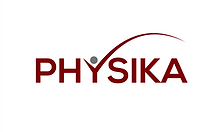
Introduction
Osteoarthritis (OA), also known as degenerative joint disease, primarily affects the knees but can also impact other joints like the hands, hips, and spine. It results from wear and tear and progressive loss of articular cartilage. In this blog, we'll delve into the etiology, symptoms, typical physical signs, management strategies, home exercises, and prevention for knee OA.
Etiology (Causes)
Primary Knee OA
Primary knee osteoarthritis occurs when articular cartilage degenerates without any known cause. This type is commonly associated with age-related degeneration and the natural wear and tear that occurs over time.
Secondary Knee OA

Secondary knee osteoarthritis is characterized by articular cartilage degeneration due to a known cause. Various factors can contribute to secondary knee OA, including obesity, joint hypermobility or instability, malpositioning of the joint (such as valgus or varus posture), previous joint injury (such as a fracture along the articular surface), congenital defects, immobilization, loss of mobility, family history, and metabolic causes like rickets.
Symptoms
The symptoms of knee osteoarthritis typically include gradual onset of knee pain that worsens with activity, stiffness, swelling, and crepitus (a cracking sound) during joint movement.
Management Strategies
Physiotherapy plays a crucial role in managing knee osteoarthritis and improving the quality of life for individuals affected. Here, we outline a range of strategies that encompass both physiotherapy interventions and other techniques aimed at effectively managing knee OA.
Exercise
Engaging in low-impact activities such as swimming or cycling is preferable over high-impact ones like jogging or tennis. Aim for approximately 150 minutes (about 2 and a half hours) of exercise per week to improve joint flexibility and strength.
Footwear and Inserts
Wearing supportive footwear with cushioned soles can help alleviate pressure on the knees. Additionally, consider using shock-absorbing inserts in your shoes for added support and comfort.
Heat and Cold Therapy
Applying heat or ice to the affected area can help reduce pain and inflammation associated with knee osteoarthritis.
Knee Sleeve or Brace

Using a knee sleeve or brace provides additional support and stability to the knee joint, especially during physical activities.
Physical Therapy
Working with a physiotherapist can provide personalized exercises and stretches aimed at improving flexibility, strength, and range of motion in the affected knee.
Prevention
While knee osteoarthritis cannot always be prevented, certain lifestyle modifications and preventive measures can help reduce the risk and manage symptoms:
Weight Management
Maintaining a healthy weight can significantly reduce stress on the knees, thereby decreasing the risk of osteoarthritis or alleviating symptoms in individuals already affected.
Activity Modification
Adapting activities that increase pain or strain on the knees can help manage symptoms and prevent further deterioration of the joint. Avoiding prolonged sitting or standing positions can also help alleviate discomfort.
Strengthening Exercises
Incorporating exercises that target the muscles around the knee joint can help improve stability and support, reducing the impact of osteoarthritis on daily activities.
Quadriceps Strengthening
The quadriceps muscles, located at the front of the thigh, are essential for knee stability and function. Strengthening these muscles can help alleviate stress on the knee joint. Examples of quadriceps strengthening exercises include:
Straight Leg Raises: Lie on your back with one leg bent and the other straight. Lift the straight leg off the ground, keeping it straight, then lower it back down. Repeat on both legs.
Leg Press: Using a leg press machine or resistance bands, push against resistance with your feet to straighten your legs.
Squats: Stand with your feet shoulder-width apart and squat down as if sitting into a chair, keeping your knees behind your toes.
Hamstring Strengthening
The hamstring muscles, located at the back of the thigh, work with the quadriceps to stabilize the knee joint. Strengthening these muscles can help maintain balance and prevent injury. Examples of hamstring strengthening exercises include:
Hamstring Curls: Lie face down on a mat with your legs straight. Bend your knees to bring your heels towards your buttocks, then slowly lower them back down.
Romanian Deadlifts: Stand with your feet hip-width apart, holding a dumbbell or kettlebell in front of your thighs. Hinge at the hips and lower the weight towards the ground while keeping your back straight, then return to standing position.
Calf Strengthening
Strong calf muscles can help support the knee joint during weight-bearing activities and improve overall lower limb function. Examples of calf strengthening exercises include:
Calf Raises: Stand with your feet hip-width apart and rise up onto the balls of your feet, then lower back down.
Heel Drops: Stand on a step or raised platform with your heels hanging off the edge. Lower your heels below the level of the step, then rise back up onto your toes.

Incorporating these strengthening exercises into your regular exercise routine can help improve joint stability, reduce the risk of injury, and alleviate symptoms associated with knee osteoarthritis. It's essential to perform these exercises with proper form and technique and to start with lighter resistance or fewer repetitions if you're new to strength training. If you have any concerns or experience pain while performing these exercises, consult with a physiotherapist.
Conclusion
In conclusion, osteoarthritis (OA) of the knee is a common condition that can impact individuals as they age. Like gray hair and wrinkles on the outside, OA is a natural part of aging for many people and is NOT always responsible for the pain you're feeling. However, it's essential to understand that mild OA is highly treatable with conventional physiotherapy and proper exercises.
By incorporating management strategies, engaging in targeted exercises, and making lifestyle modifications, individuals with knee OA can effectively manage their symptoms and maintain an active lifestyle. With proper care and guidance, you can quickly return to your favorite activities and enjoy a fulfilling life.
Remember, early intervention and a comprehensive approach are key to improving the quality of life for individuals with knee OA. If you experience symptoms or have concerns about your joint health, don't hesitate to consult a healthcare professional for personalized guidance and support.
Marco Chiasson, Physiotherapist
Physika


Comments